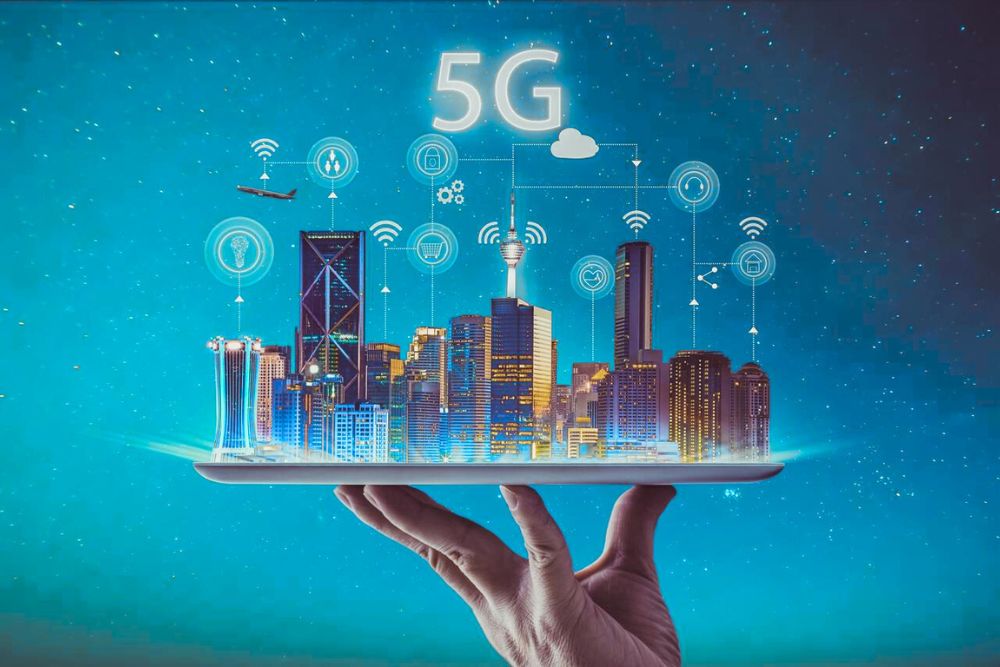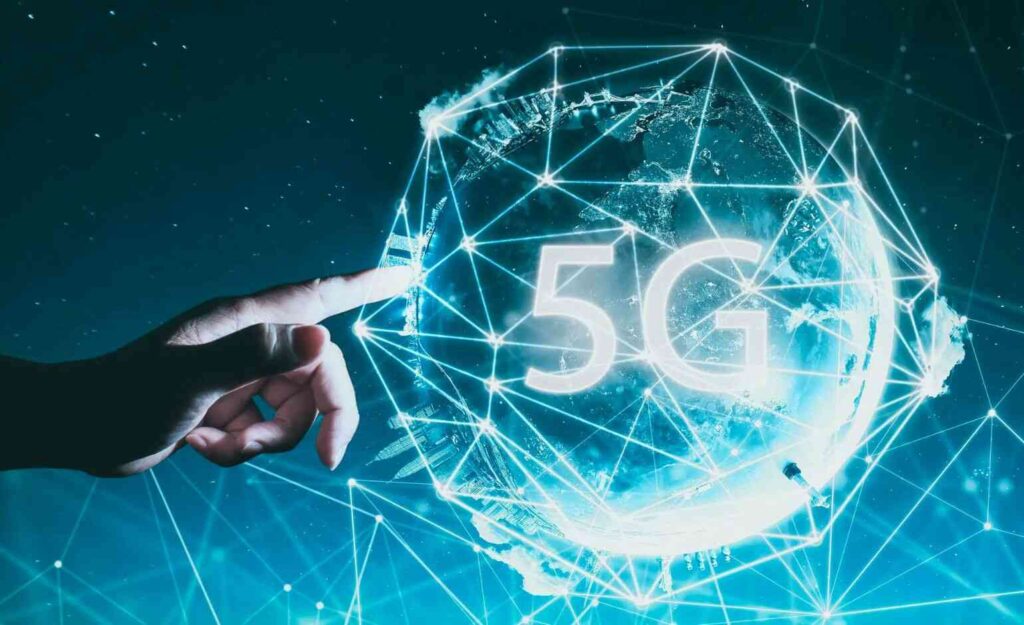You’ve probably heard a lot about 5G recently, but what does 5G actually mean? Simply put, 5G is the fifth generation of wireless technology that powers mobile networks. It’s not just about faster internet on your phone. 5G technology is designed to connect people and devices more efficiently, with higher speeds, lower delays, and the ability to support many more connections at once.
This new wave of network promises to transform everyday experiences, from streaming and gaming to how businesses operate and cities function. Understanding what 5G is and how it works helps us appreciate the big changes already underway and what’s coming next.
What Is 5G? Understanding the Basics
5G stands for the fifth generation of mobile network technology. It’s the latest transformation after 4G and offers significant improvements in speed, capacity, and responsiveness. But 5G is not just about faster internet on your phone. It’s a technology designed to connect many more devices simultaneously and support new applications that require instant data exchange.
Unlike earlier networks, 5G supports a wide range of use cases beyond just mobile phones, including smart homes, industrial automation, and connected vehicles. This technology uses advanced radio waves to deliver faster, more reliable connections wherever you are.
How 5G Technology Works: The Science Behind the Speed
5G operates by using different parts of the radio spectrum to transmit data. It includes low, mid, and high-frequency bands. The high-frequency waves, often called millimeter waves, carry large amounts of data very quickly but travel shorter distances and struggle to pass through buildings.
To ensure strong coverage, 5G networks rely on many small antennas placed close together, rather than the traditional large cell towers. This dense network of small cells helps maintain fast and reliable connections, especially in busy areas.
Advanced technologies like Massive MIMO enable multiple antennas to send and receive data simultaneously, increasing network capacity. Beamforming focuses signals directly toward devices, improving speed and reducing interference. These innovations together make 5G faster and more efficient than previous generations.
Main Differences Between 4G and 5G
The differences between 4G and 5G help highlight why 5G is such a game-changer. While 4G networks have served us well for years, 5G brings major improvements in speed, latency, and capacity. These enhancements enable new technologies and applications that were not possible before.
Here is a clear comparison of the main features that set 5G apart from 4G:
| Feature | 4G Network | 5G Network |
| Speed | Good speeds for most internet use | Up to 100 times faster than 4G |
| Latency | Around 30-50 milliseconds | As low as 1 millisecond |
| Capacity | Supports fewer connected devices | Supports many more devices simultaneously |
| Use Cases | Mobile internet, streaming, calls | Real-time gaming, remote surgery, autonomous vehicles |
What Does 5G Do? Real-World Benefits for Users
5G technology offers several practical benefits that improve everyday life. For one, it provides much faster internet speeds, making streaming high-quality videos, downloading files, and browsing the web quicker and smoother. This is especially noticeable in crowded areas where older networks often slow down.
Another key benefit is the low latency of 5G, which reduces delays in communication. This improvement enhances real-time activities such as video calls and online gaming by making interactions more responsive and natural.
Additionally, 5G supports the connection of many devices at once without performance loss. This allows for better smart home setups and more reliable connections for wearables, security systems, and other Internet of Things devices.
How 5G Supports the Internet of Things (IoT)
The Internet of Things, or IoT, refers to the growing network of connected devices like smart home appliances, wearables, and sensors. 5G technology plays a crucial role in making IoT more efficient and reliable.
With its ability to handle thousands of devices per square kilometer, 5G ensures that all these gadgets can communicate seamlessly without network congestion. This means your smart thermostat, security cameras, and health monitors can work together smoothly and respond quickly.
Furthermore, 5G’s low latency allows IoT devices to send and receive data in near real-time. This capability is essential for applications like remote monitoring, industrial automation, and smart city infrastructure, where timely information is critical.
The Role of 5G in Transforming Industries
5G is driving significant changes across various industries by enabling faster, more reliable communication and real-time data sharing. In manufacturing, 5G supports automation and remote monitoring, helping factories improve efficiency and reduce downtime.
Healthcare benefits from 5G through telemedicine and remote diagnostics, allowing doctors to provide care without being physically present. This technology also supports the use of wearable devices that continuously monitor patient health.
Logistics and transportation industries use 5G for precise tracking of goods and vehicles, optimizing routes and delivery times. Autonomous vehicles rely on 5G’s low latency to communicate quickly with other cars and infrastructure, enhancing road safety.
5G and Smart Cities: Building the Connected Urban Future

5G technology is a main driver behind the development of smart cities. By connecting infrastructure like traffic lights, public transportation, and environmental sensors, 5G enables more efficient management of urban resources.
For example, real-time traffic data can help reduce congestion by adjusting signal timings. Public safety improves as emergency services receive instant updates and better communication tools. Additionally, environmental monitoring can track air quality and noise levels to create healthier city environments.
These smart city applications rely on 5G’s high capacity and low latency to function effectively, making urban living more convenient and sustainable.
Challenges in Deploying 5G Networks
Deploying 5G networks comes with several challenges. One major issue is that the high-frequency signals used by 5G, especially millimeter waves, have a limited range and struggle to pass through buildings. This requires installing many more small cell antennas, especially in urban areas, to maintain reliable coverage.
The cost and complexity of upgrading infrastructure is also significant. Building a dense network of antennas and ensuring they are connected to high-speed fiber networks demands time and investment.
Security is another concern, with more devices connected through 5G, the potential for cyberattacks increases. Network providers and regulators must implement strong security measures to protect data and maintain user privacy.
Security Considerations in 5G Networks
As 5G expands, securing these networks becomes increasingly important. The vast number of connected devices creates more entry points for potential cyber threats. Hackers could exploit vulnerabilities if networks are not properly protected.
To address this, 5G networks incorporate advanced encryption and authentication methods. Providers also use network slicing, which separates different types of data traffic to reduce risk and control access.
Governments and companies are collaborating to develop security standards and protocols that keep 5G networks safe, ensuring users and businesses can trust the new technology.
The Economic and Social Impact of 5G
5G is expected to have a profound effect on the global economy. Experts predict it will contribute trillions of dollars in value over the next decade by enabling new business models and improving productivity across sectors.
Socially, 5G can help bridge the digital divide by expanding high-speed internet access to rural and underserved areas. This improved connectivity supports education, healthcare, and economic opportunities for more people.
As 5G becomes widespread, it will create jobs, foster innovation, and drive more inclusive growth worldwide.
5G: Connecting Today, Empowering Tomorrow
5G is not simply about faster internet speeds. It is reshaping the very foundation of connectivity. Industry projections estimate that by 2025, over 1.7 billion devices will rely on 5G networks, enabling a vast ecosystem of connected technologies from smart cities to healthcare advancements.
Its ultra-low latency and high capacity unlock innovations like autonomous vehicles and real-time remote surgeries, which require instant and reliable communication. Economists forecast that 5G will add more than $13 trillion to the global economy in the next decade, highlighting its transformative potential.
As 5G continues to expand, it empowers industries and individuals alike, creating smarter, more connected communities and opportunities that extend far beyond what we’ve seen before.








